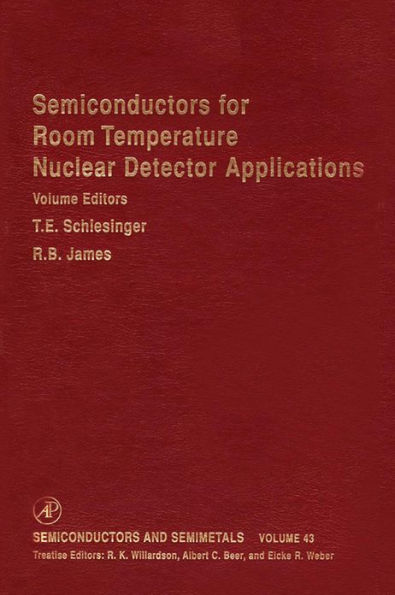Since its inception in 1966, the series of numbered volumes known as Semiconductors and Semimetals has distinguished itself through the careful selection of well-known authors, editors, and contributors. The"Willardson and Beer"Series, as it is widely known, has succeeded in publishing numerous landmark volumes and chapters. Not only did many of these volumes make an impact at the time of their publication, but they continue to be well-cited years after their original release. Recently, Professor Eicke R. Weber of the University of California at Berkeley joined as a co-editor of the series. Professor Weber, a well-known expert in the field of semiconductor materials, will further contribute to continuing the series' tradition of publishing timely, highly relevant, and long-impacting volumes. Some of the recent volumes, such as Hydrogen in Semiconductors, Imperfections in III/V Materials, Epitaxial Microstructures, High-Speed Heterostructure Devices, Oxygen in Silicon, and others promise indeed that this tradition will be maintained and even expanded.
Reflecting the truly interdisciplinary nature of the field that the series covers, the volumes in Semiconductors and Semimetals have been and will continue to be of great interest to physicists, chemists, materials scientists, and device engineersin modern industry.
- One of the first comprehensive works on room-temperature nuclear detectors
- Edited by technical experts in the field
- Written by recognized authorities from industrial and academic institutions
- Focused on the electrical, optical, and structural properties of semiconductors used for room-temperature nuclear detectors
Since its inception in 1966, the series of numbered volumes known as Semiconductors and Semimetals has distinguished itself through the careful selection of well-known authors, editors, and contributors. The"Willardson and Beer"Series, as it is widely known, has succeeded in publishing numerous landmark volumes and chapters. Not only did many of these volumes make an impact at the time of their publication, but they continue to be well-cited years after their original release. Recently, Professor Eicke R. Weber of the University of California at Berkeley joined as a co-editor of the series. Professor Weber, a well-known expert in the field of semiconductor materials, will further contribute to continuing the series' tradition of publishing timely, highly relevant, and long-impacting volumes. Some of the recent volumes, such as Hydrogen in Semiconductors, Imperfections in III/V Materials, Epitaxial Microstructures, High-Speed Heterostructure Devices, Oxygen in Silicon, and others promise indeed that this tradition will be maintained and even expanded.
Reflecting the truly interdisciplinary nature of the field that the series covers, the volumes in Semiconductors and Semimetals have been and will continue to be of great interest to physicists, chemists, materials scientists, and device engineersin modern industry.
- One of the first comprehensive works on room-temperature nuclear detectors
- Edited by technical experts in the field
- Written by recognized authorities from industrial and academic institutions
- Focused on the electrical, optical, and structural properties of semiconductors used for room-temperature nuclear detectors

Semiconductors for Room Temperature Nuclear Detector Applications
606
Semiconductors for Room Temperature Nuclear Detector Applications
606
Product Details
| ISBN-13: | 9780080571997 |
|---|---|
| Publisher: | Elsevier Science |
| Publication date: | 09/11/1995 |
| Series: | Semiconductors and Semimetals , #43 |
| Sold by: | Barnes & Noble |
| Format: | eBook |
| Pages: | 606 |
| File size: | 12 MB |
| Note: | This product may take a few minutes to download. |
